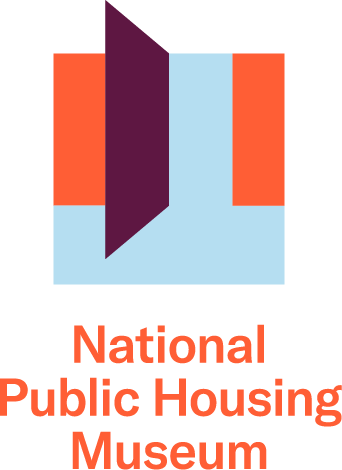"“I think a lot of museums are agnostic on politics, or apolitical,” says [Associate Director, Robert] Smith. “There’s an idea that museums can’t advocate in the policy realm, and we just don’t think that’s true.” The new museum aims to bring together artists and scholars with the people most affected by housing policy, and host discussions that can help shape the future of that policy."
-Adele Peters, Fast Company, January 26, 2018
"Lee and company intend the museum experience to lead visitors to examine notions about house and home and confront received ideas about what it means to be American. But they also want it to be a place that gives back to the residents. The NPHM has promised to give residents museum construction and operation jobs. Once built, the site will serve as a space for assembly."
—Maya Dukmasova, Chicago Reader, July 5, 2017
"Finally [Cassie Fennell's Last Project Standing] narrative expands to encompass those outside of public housing in a final chapter about the planning of a national public-housing museum ... crucial to the argument that public housing is not just about or for its residents. Rather, public housing and its institutional as well as physical demise implicate an entire democratic society."
—Dory Thrasher, Metropolitics, April 12, 2016
"The exhibitions offer anything but a conventional museum experience — paint is peeling off the concrete walls and steel door frames are rusting. Yet as arranged by curator Todd Palmer, the shows collectively humanize the residents of public housing even as they reveal how public housing itself became so dehumanizing. "
—Blair Kamin, Chicago Tribune, November 7, 2015
“We’re trying to draw attention to a problematic history to galvanize public interest in resolving these issues,” says NPHM curator Todd Palmer...The exhibition’s setting—the shuttered Addams building, abandoned since 2002—demonstrates the consequences of not resolving these issues."
— Zach Mortice, Architectural Record, October 27, 2015
"Chicago has a very particular historic context in terms of housing. "Partnering with the NPHM, which grew out of that context, aided both institutions to expand the conversation about housing as a public good. "
— Susanne Schindler (with Jacob Moore) interviewed by Samuel Medina, Metropolis, November 2015
"Particularly notable [at the Biennial] are the opening of Theaster Gates’s Stony Island Arts Bank on the city’s South Side, and a staging of the Temple Hoyne Buell Center’s House Housing exhibition at the nascent National Public Housing Museum. Both are located in historic buildings that rival the Cultural Center in social significance."
— Michael Abrahamson, The Architectural Review (London), October 14, 2015
"One of the biennial’s brighter ideas is to keep its attendees (some thirty-one thousand at the opening) the hell out of such archi-tourist traps as Frank Lloyd Wright’s Oak Park. Most of the programming outside the main venue ... is in such places as the National Public Housing Museum—lodged in the ruins of the former Jane Addams Homes, and exhibiting the engaging House Housing study from Columbia University’s Temple Hoyne Buell Center."
—Ian Volner, Artforum, December 2015
"While you look at exhibits, you listen to stories that resonate with them. Voices blending in the air. A variety of perspectives."
— Liz Chilsen, Chicago Now, October 13, 2015
